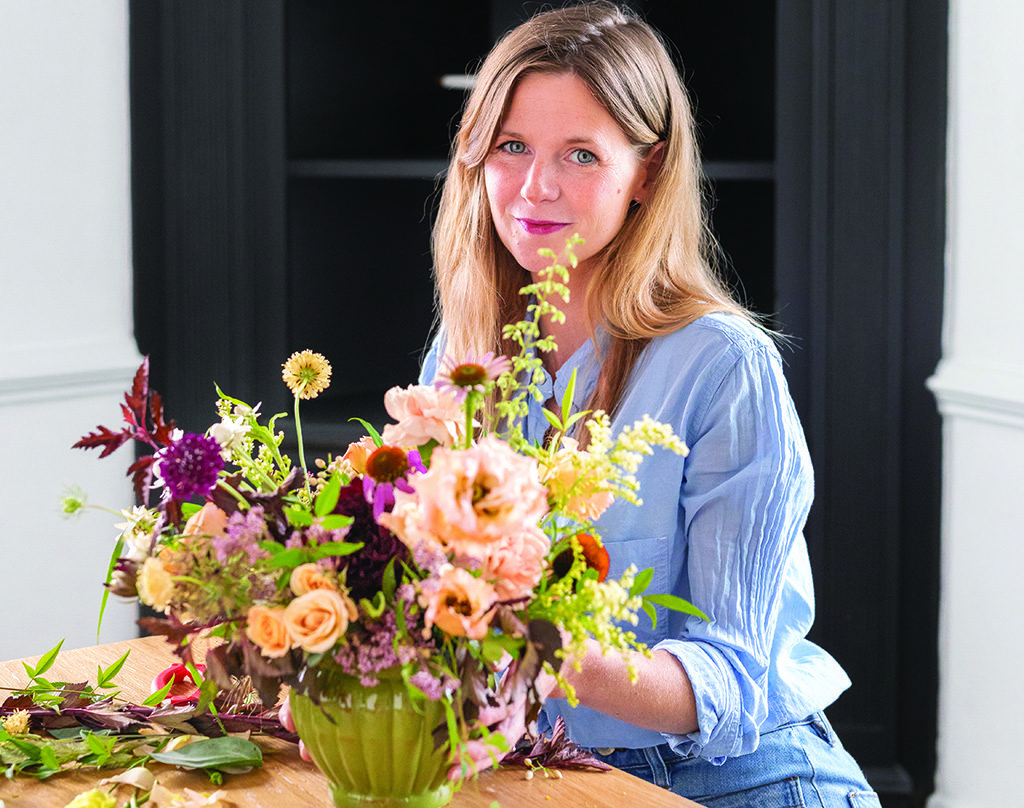
Abby Chick, owner of Blakemore’s Flowers, in Harrisonburg, Virginia
During the pandemic, Abby Chick, owner of Blakemore’s Flowers, in Harrisonburg, Virginia rediscovered the emotional fulfillment of providing flowers. “That’s when I fell back in love with what I do as a florist,” she says.
The result of this realization? Chick decided to actively reevaluate what she wanted from her business. Is it time for you to do the same? The good news for florists is that today’s marketplace offers much more flexibility to pivot than in the past, writes Bruce Wright in the September/October issue of Floral Management. The first step determining the direction in which you want to head.
Chick tackled this stage by seeking out mentors and educational opportunities. She often heard the question, “Who is your ideal client?” More helpful, in her case, was the suggestion, “Walk me through your perfect workday.”
Another way to discover your optimum direction is to think about all the tasks you need to accomplish and assign each one a color. Assign green to the tasks you enjoy most, yellow for the tasks that you do well but might not enjoy, and red for the tasks you don’t do well and dislike. The goal is to have 70 percent of the tasks green and between 20 percent to 25 percent of the tasks yellow. Red tasks should be minimal.
Another tip: eliminate what’s not working. When lockdowns prevented florists from receiving walk-in customers, for example, some discovered that they weren’t missed.
“For most shops, these customers are the least profitable because of the dollar amounts they spend and the time they take,” says Dan McManus of the consulting firm TeamFloral. Some shops retained a retail location with a sales counter but phased out add-on products targeted to walk-ins only. Instead, they directed all their marketing efforts to phone and online sales. Other shops focused on winning corporate accounts or currying favor with local funeral homes as a way of cultivating business that fits better with the owners’ preferred management style.
Potential pathways to business growth abound. For some, taking fewer orders — even at a higher price point — doesn’t have the same appeal as running a flower shop that can deliver high volume consistently and profitably. In that scenario, recruiting, training, and managing a large staff is one of the keys to success, says Brian Sykes of Absolutely Beautiful Flowers in St. Petersburg, Florida. Most florists fret over the shortage of willing workers, but Sykes has created a strategy that allows him to select from a large pool of unskilled but eager applicants, who are then trained by current employees. Employees are motivated to train new recruits so they can have more flexibility in schedules, Skyes says.
However, you want your floral business to grow, finding a direction and implementing a strategy requires time and perspective that many florists don’t allow themselves. As a shop owner, you are the business. Investing time and resources in yourself as a leader — especially if you want your business to move forward in a new direction — is essential.
For more tips on building a business that best meets your needs, check out the September/October issue of Floral Management online.
Molly Olson is a contributing writer for the Society of American Florists.

